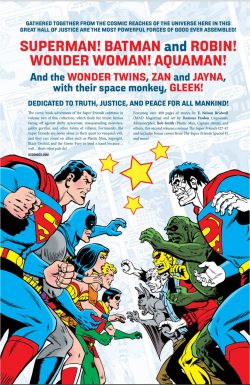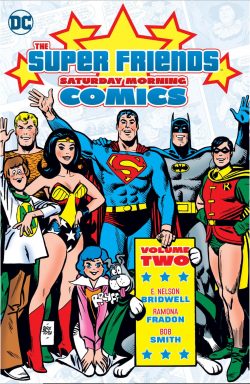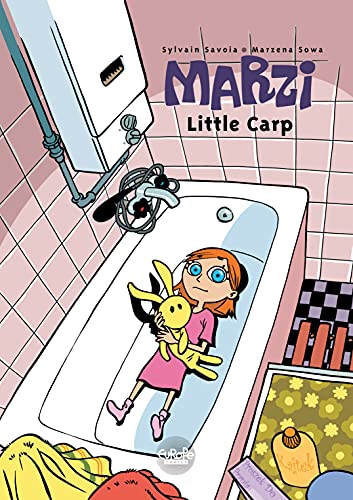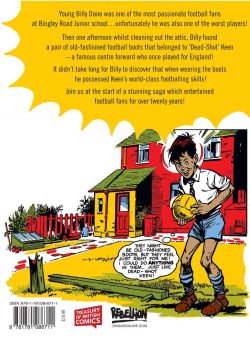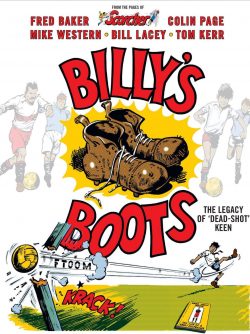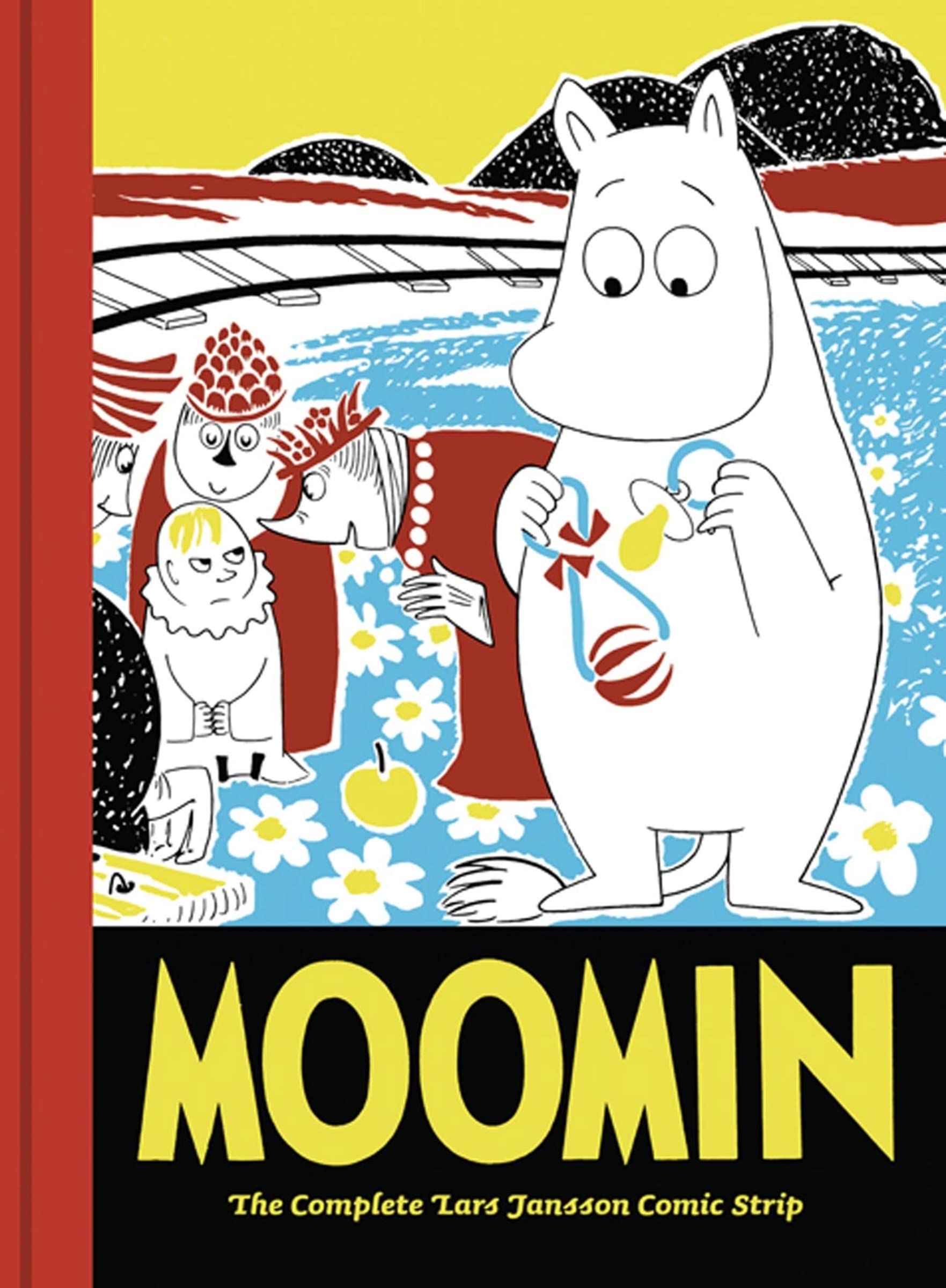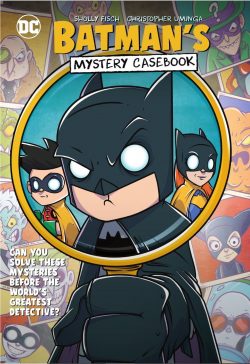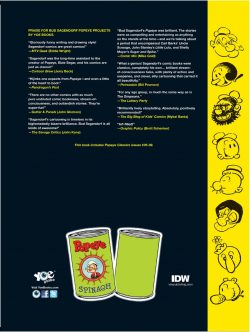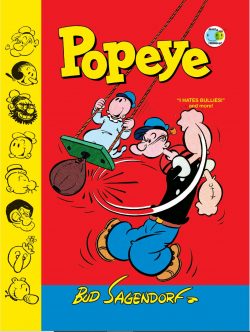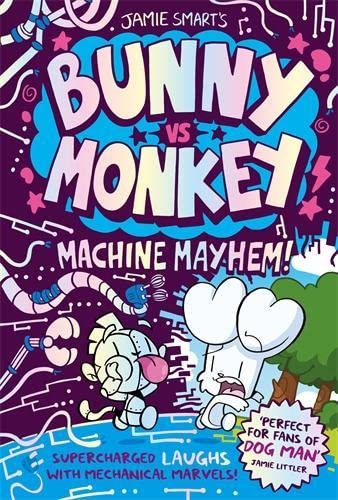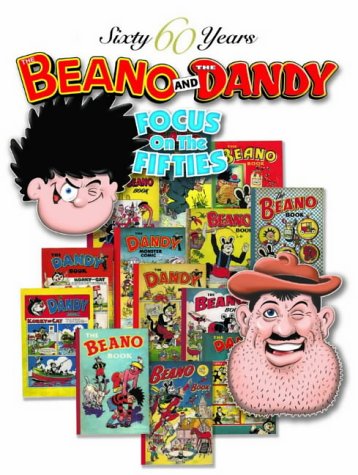
By Many & various (DC Thomson)
ISBN: 978-0-851-16846-3 (HB)
Win’s Christmas Gift Recommendation: Scotland’s Finest Fun Factory Fancies… 9/10
Whenever we’ve faced our worst moments, humans tend to seek out old familiarities and wallow in the nostalgia of better days. Let’s see how this particular foray feels, especially as it’s still unreachable by that there newmfangled electro retrieval widgetry, but still remarkably cheap in assorted emporia and on them there interwebs…
Released in 2004 as part of the DC Thomson Sixtieth Anniversary celebrations for their children’s periodicals division – which has more than any other shaped the psyche of generations of British kids – this splendidly oversized (299 x 205mm) 144 page hardback compilation rightly glories in the incredible explosion of ebullient creativity that paraded through the flimsy colourful pages of The Beano and The Dandy during a particularly bleak and fraught period in British history. Tragically, neither it nor its companion volumes are available digitally yet, but hope springs ever eternal…
Admittedly this book goes through some rather elaborate editing, design and paste-up permutations to editorial explaining for modern readers the vast changes to the once-commonplace that’s happened in the intervening years. Naturally the process has quietly dodged the more egregious terms and scenarios that wouldn’t sit well with 21st century sensibilities, although to my enlightened sensibilities the concentration on whacking children on the bottom does occur with disturbing frequency – the Bash Street Kids even had their fearfully expectant upraised bums as the strip’s logo for a few years!
However, viewed as a cultural and historical memoire, this is a superb comic commemoration of one of our greatest communal formative forces, with a vast number of strips and stories carefully curated from a hugely transformative period in national history.
They’re also superbly timeless examples of cartoon storytelling at its best…
Until it folded and was briefly reborn as a digital publication on 4th December 2012, The Dandy was the third-longest running comic in the world (behind Italy’s Il Giornalino which launched in 1924 and America’s Detective Comics in March 1937). The Dandy premiered on December 4th 1937: breaking the mould of traditional British predecessors by using word balloons and captions on some strips, rather than just the narrative blocks of text under the sequential picture frames that had been the industry standard.
A huge success, it was followed on July 30th 1938 by The Beano – and in concert they revolutionised the way children’s publications looked and, most importantly, how they were read.
Over the decades the “terrible twins” spawned so many unforgettable and beloved household names who delighted countless avid and devoted readers, and their unmissable end of year celebrations were graced with bumper bonanzas of the comics’ weekly stars in extended stories in magnificent hardback annuals.
During WWII, rationing of paper and ink forced the “children’s papers” into an alternating fortnightly schedule: on September 6th 1941, only The Dandy was published. A week later just The Beano appeared. The rascally rapscallions only returned to normal weekly editions on 30th July 1949, but the restrictions had not hurt sales. In fact, in December 1945, The Beano #272 became the first British comic to sell a million copies, and the post-war period saw more landmarks as the children’s division of DC Thomson blossomed over the next decade, with innovative characters and a profusion of talented cartoonists who would carry it to publishing prominence, even as the story papers died back in advance of more strip anthologies like The Topper (1953) and The Beezer (1956)…
This compilation primarily concentrates via random extracts and selected strips on the development of established 1940s stars – like Biffo the Bear (1948), Lord Snooty (1938), The Smasher (1938, but completely reinvented in 1957), Korky the Cat and Desperate Dan (both 1937), who all survived the winds of change to grow into beloved and long-lived favourites in the new era. They’re highlighted beside the most successful new characters of the fifties, including Dennis the Menace (1951), Minnie the Minx, Roger the Dodger & Little Plum (all 1953) and the Bash Street Kids (1956 or 1954 if you count prototype When the Bell Rings! as the same).
Nevertheless there’s also a wonderful selection of less well known features on view…
This superb celebration of Celtic creativity is packed literally cover-to-cover with brilliant, breakthrough strips with the mirth starting on the inside front with an outrageous 2-colour Frontispiece tableau by Leo Baxendale of When the Bell Rings!
It’s mirrored at the back of the book by a similarly hilarious spread starring Biffo by indisputable cartoonist Dudley D. Watkins …
The main event begins with Focus on the 50’s, as a full-colour Roger the Dodger page by Ken Reid and a Baxendale 2-tone Bash Street Kids strip heralds an editorial introduction, context on soapbox cart building and casting call ‘Fifties Fun-Folk’ before seguing into a tale of Tin Lizzie: a pioneering comedy strip in block-text & pic format about a mechanical housemaid and robot butler Brassribs. Starting in 1953 as a prose serial, it was remodelled as a comic drawn by Jack Prout and Charles Grigg which presaged later mega-hit Brassneck…
With all these pages playing with the theme of “carties”, snatches of Watkins’ Lord Snooty and the 1957 iteration of The Smasher by Hugh Morren lead to an episode of ‘Charlie the Chimp’.
Limned by Charles Grigg, the feature was another comedy drama in block & pic format starring a smart but strictly realistic simian working as a porter in a boarding house…
A full-colour Korky strip by James Crighton, with the cat using his cart as a taxi, ends this section before ‘A Day in the Life of Dennis’ offers an extended collection of strips and features starring the magnificent Menace, rendered by creator Davey Law. The Bad Boy debuted in The Beano #452 (in shops from March 12th 1951) and begins with prose piece ‘Nursery Crimes – or Dennis Growing Up by Dennis’s Dad’ taken from the first Dennis the Menace Book. Its backed up by 15 strips from the era, including ‘News Boy’, ‘Doctor’s Orders’, ‘Top of the Class’ and ‘Dad in Disgrace’ before literally and figuratively shifting gear to see Korky and Biffo as “Teddy Boys” in individual full-colour fashion yarns…
Assorted snapshot strips from venerable fantasy serial ‘The Iron Fish’, illustrated by Jack Glass, lead to a Watkins moment in ‘50’s Medicine the Desperate Dan Way!’ before Baxendale’s ‘Little Plum’ enjoys his own time in the spotlight via 22 strips culled from both comics and Annuals.
Desperate Dan crops up again in episodes from 1952-1954 before “Strongman’s Daughter” Pansy Potter (by James Clark) outwits a wicked wizard whilst Paddy Brennan exults in full-colour in the debut chapter of fantasy thriller ‘Fighting Forkbeard (The Sea Wolf from Long Ago)’ wherein a dragonship full of Vikings washes up and attacks a modern fishing village…
A Baxendale Bash Street strip guest-starring Minnie the Minx opens a selection of crossovers with Biffo and others, after which Hungry Horace and Shaggy Doggy offer a glimpse at the work of Allan Morley, an old school cartoonist who had been with The Beano since #1 but was now giving way to new style and content…
Created by Ken Reid, Jonah was an accursed sailor who sank every vessel he touched and the splendid sampling of strips here leads to Watkins’ introduction of Desperate Dan’s nephew Danny and niece Katey from February 1957, and is followed by a Biffo strip showing a number of things totally banned from modern comics…
‘Guess the Date!’ and ‘50’s Housing – the Desperate Dan Way!’ plus a Korky clash with his arch enemies – The Mice – lead to examples of strips that didn’t work out with a page each for Jenny Penny (Jimmy Thompson) and Little Angel Face (by Ken Reid) before a Lord Snooty vignette from 1954 opens a section starring a certified superstar – Roger the Dodger…
Realised by Reid, the consummate con artist struts his stuff and takes his retributive punishments in a dozen strips, after which the modern medium of home entertainment is tackled in a colour Korky tale and ‘50’s Tele-Watching – the Desperate Dan Way!’ before a Morley Charlie Chutney cookery classic from 1954 acts as palate cleanser for what follows…
All that spanking endured by wayward kids is especially prevalent in a selection of manic material starring Minnie the Minx: in 28 episodes of conniving, chicanery and clobbering courtesy of Baxendale…
A brilliant blast of Biffo in colour brings us to the Bash Street Kids in all their grubby glory. Accompanied by another mini-editorial providing historical context, a slap-happy selection combines double-page tableaux of When the Bell Rings! with a surfeit of Bash Street strips and reveals how the feature evolved. The Baxendale cover to story paper Wizard #1547 (October 1955) accompanies prose tale ‘Bash Street School’ from the June 4th edition, and discloses how the tableau feature inspired comedic school stories which in turn informed a stripped-down strip version with the 16+ kid cast pared down to the 9 we know today…
The process was applied to a few DCT characters, as seen in text story ‘The Boyhood of Desperate Dan’, preceded by the cover for Wizard #1492 (September 18th 1954) and a page of prose thriller ‘Red Rory of the Eagle’ (September 1951) ranged beside the strip it became with a Jack Glass rendered episode from September 1958…
Bill Holroyd provides a 1954 tale of voracious be-kilted ‘Plum MacDuff – The Highlander Who Never Gets Enough’ and the animal antics of ‘Kat and Kanary’ – created by Grigg but probably illustrated here by Baxendale – introduces ‘50’s Tele-Watching – the Desperate Dan Way!’ and follows up with a Biffo strip from November 1956 that might just be the UK’s first infomercial; a Grigg royal rarity featuring Prince Whoopee and a Reid Roger the Dodger lark that eschews the punitive slipper for a more targeted retribution…
A sampling of fantasy drama series follows: name – and picture – checking ‘The Horse That Jack Built’, Brennan’s ‘The Shipwrecked Circus’ and Glass’ ‘The Bird Boy’ before we hit the final stretch, starting with a 1959 Smasher saga about boots, a quick appearance for ‘Cocky Sue, the Cockatoo – She’s the Brains of the Pirate Crew’ by an artist I should recognise, but don’t, and ‘50’s Transport – the Desperate Dan Way!’
With past and future in mind Lord Snooty then pre-empts the microwave oven in a wild yarn from 1954, whilst ‘Wee Davie and King Willie’ strike an early and unexpected blow for animal rights in a strip from 1957 by Ken Hunter, who also ends our comic capers with a wild & woolly double page bonanza tableau set in ‘Wee Davie’s Zoo’…
Sadly, none of the writers are named and precious few of the artists, but I’ve offered a best guess as to whom we should thank, and of course I would be so very happy if anybody could confirm or deny my supposition…
A marvel of nostalgia and timeless comics wonder, the addictive magic of this collection is the brilliant art and stories by a host of talents that have literally made Britons who they are today. Bravo to DC Thomson for letting them out for a half-day to run amok once again; can we please have more and in digital edition, too?
© DC Thomson & Co. Ltd. 2004

